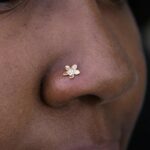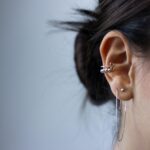Table of Contents
In this blog post, we’re going to demystify the healing process of a tongue piercing. We’ll uncover the timeline, give you a clear picture of what to expect, and share a few insider tips to ease the healing period. So, whether you’re a piercing veteran looking to add another badge to your collection, or a newbie curious about taking the plunge, this guide is your ultimate roadmap to understanding and navigating the healing process like a pro. Buckle up…oops, I mean, let’s get started (had to sneak a bit of humor there, you know!).

Your Tongue Piercing Adventure Begins
Tongue piercings are definitely in the “it’s a cool thing” category. They’re easily hidden (when necessary), and most people find getting one to be less painful than they expected. However, remember, pain is a subjective thing; what’s a pinch for one might be a sting for another.
The Swelling Story
Now here’s a fun fact: your tongue will swell up, usually for about 8 to 10 days after the piercing. The degree of swelling depends on the piercing’s placement—the further back, the more it puffs up. I remember when I got mine, it felt like I had a small balloon in my mouth!
Talking and Eating: The Early Days
For the initial days, you’ll have some challenges with eating solid foods and speaking clearly. I remember living off smoothies and feeling like a novice ventriloquist trying to talk without moving my tongue much!
Jewelry Talk
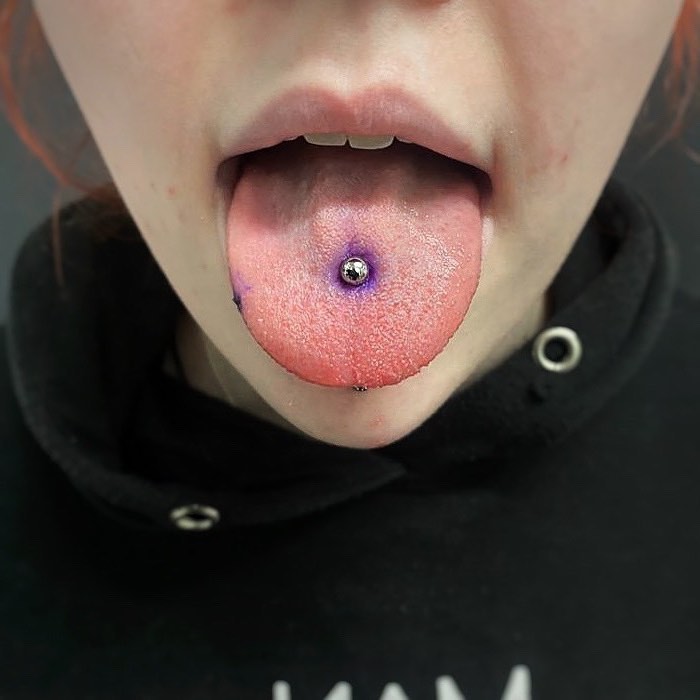
Your initial jewelry will be longer to allow for swelling. You usually have the choice between surgical steel or titanium, which comes in various colors (always loved that!). I recommend titanium, as some people react to surgical steel. Once the swelling decreases, you’ll switch to a shorter barbell. After the healing phase, you can even consider a labret stud or a tongue retainer when you need to be a bit more discreet.
Healing Process: The Do’s and Don’ts
While your tongue is healing, there are a few things you should steer clear of:
- Solid, acidic, sticky, or spicy foods: They can be painful to eat.
- Excessive talking: It can strain and potentially harm your fresh piercing. Plus, let’s be real, your speech will be a bit garbled!
- Kissing or other oral activities: These can introduce bacteria into the healing process.
- Sticking foreign objects (fingers, pens, etc.) into your mouth: Same reason as above.
- Smoking: It can hinder the healing process and is a potential source of harmful bacteria.
- Playing around with your jewelry: Once healed, you’ll have all the time in the world for this!
Day-by-Day Healing Guide
Your tongue generally takes 3 to 4 weeks to heal, making it one of the fastest healing piercings (thanks, saliva enzymes!).
Days 1–5: Expect swelling and speech difficulties. Stick to soft foods and cold drinks, and avoid alcohol, hot drinks, smoking, touching your barbell, and drugs like ibuprofen and aspirin that can increase swelling.
Days 5–7: The swelling will begin to subside (a sigh of relief moment, trust me!).
Days 7–10: Once the swelling is down, it’s time for the shorter barbell.
Days 10–28: These are the home stretch days. You’re in the final healing phase now.
Jewelry Out: Yes or No?
How long can you leave your jewelry out? Well, it depends. Some piercings might close up very quickly, while others can last without jewelry for up to three weeks. Be careful, though—tongues heal quickly, so keep that jewelry in place!
Your Quick-Healing Tongue Piercing Checklist
To reduce healing time, keep these tips in mind:
- Ice-Cold Drinks: They’re not just refreshing; they help with swelling!
- Keep it Clean: This includes your mouth and the piercing site. Brush, rinse, gargle regularly, and use a nonalcoholic and fluoride-free mouthwash.
- Choose the Right Jewelry: Make sure it’s secure, and switch to a shorter barbell once the initial swelling goes down. Titanium is the safest bet.
- Avoid Irritants: Keep fingers and foreign objects away from your mouth, limit excessive talking and chewing, and avoid alcohol, smoking, kissing, or any other potential irritants.
- Infection Warning Signs: If you see swelling, redness, discoloration, or discharge, reach out to a medical professional immediately.
When to Seek Medical Advice
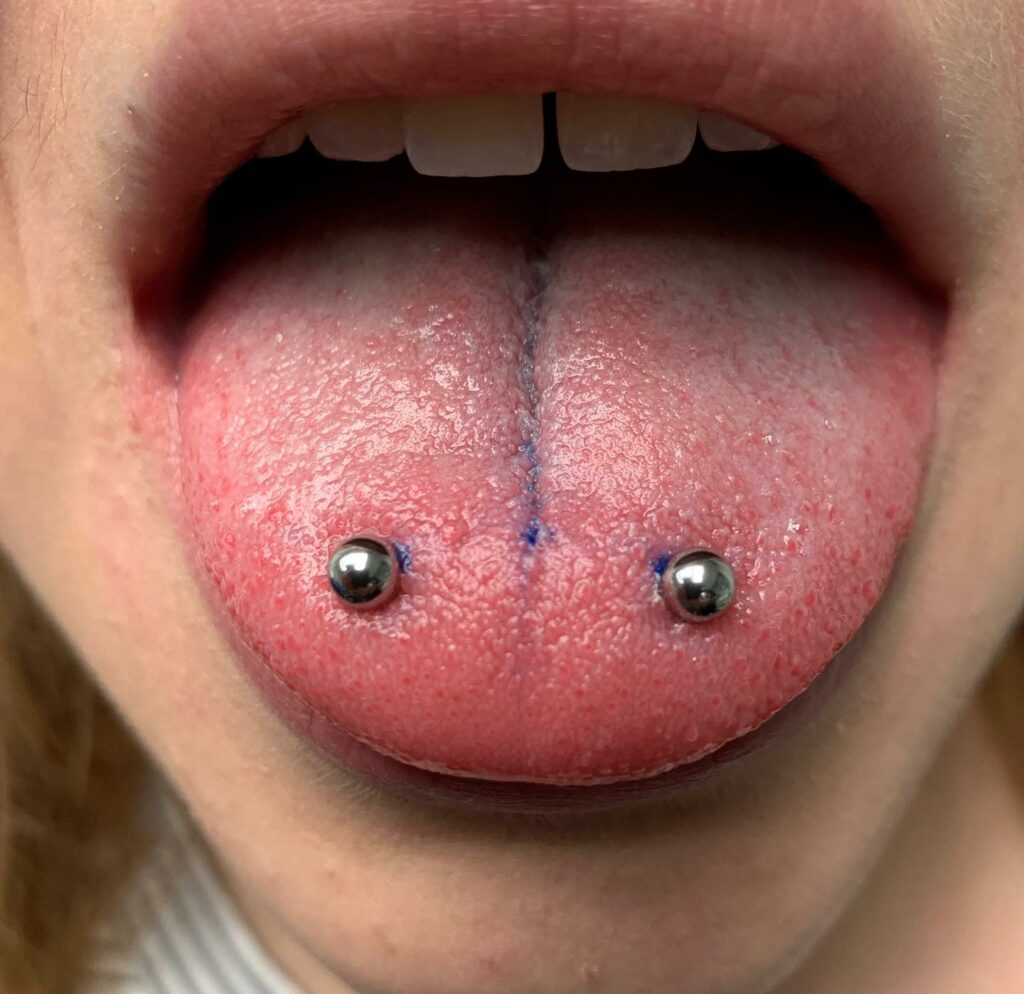
Experiencing the following while healing is normal, and they’ll subside once the piercing is fully healed:
- Increased saliva production.
- Tingling or burning sensation and tenderness at the piercing site.
- A white fluid excreted by the wound (it’s just dead white blood cells leaving your body).
However, contact a doctor immediately if you notice:
- Excessive or worsening swelling.
- Redness or red streaks, especially with swelling, pain, or fever.
- Excessive or persistent bleeding.
- Unusual discoloration (greenish, purple, yellow, or black) or discharge from the piercing.
So there you have it, your guide to tongue piercing healing from your go-to tattoo and piercing expert, Tori! Here’s to a smooth healing journey and rocking that cool tongue piercing!
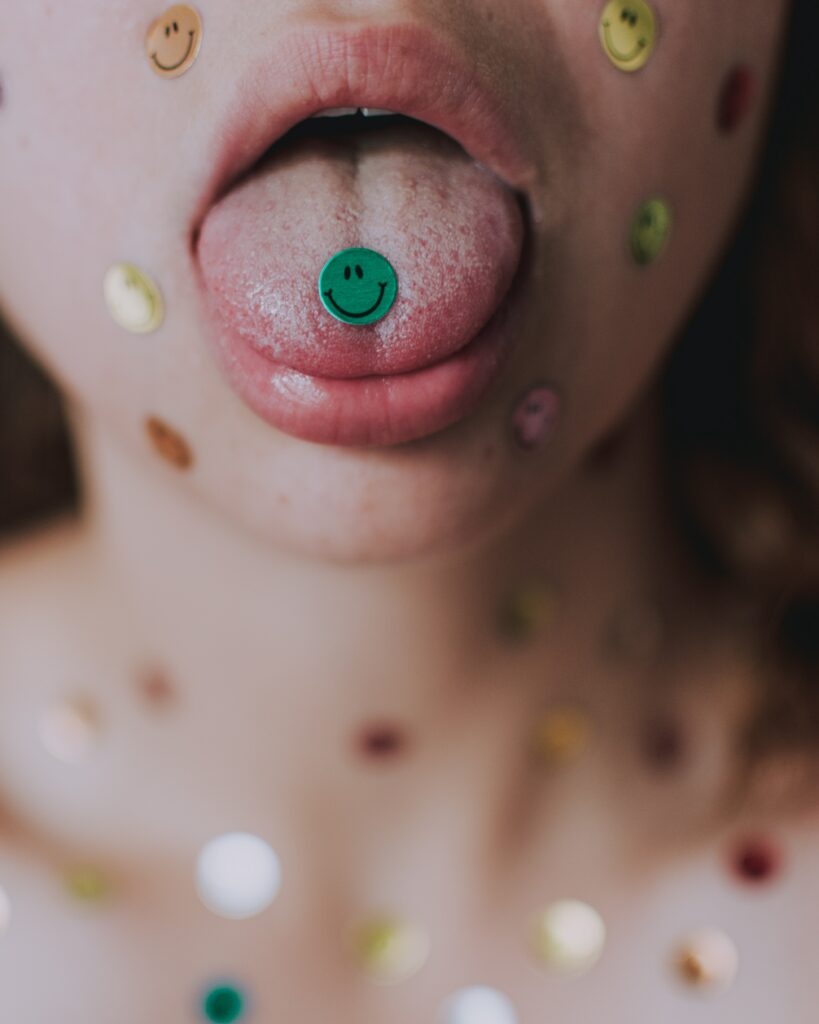
Complications & Risks Associated With Tongue Piercings
Tongue piercings, like any body modifications, come with their own set of potential risks and complications. While many people get tongue piercings without any problems, being aware of the potential risks is a crucial part of making an informed decision.
- Infection: Your mouth is full of bacteria, so there’s a risk of infection after a tongue piercing. Poor aftercare or inappropriate oral activities can increase the chances of an infection.
- Swelling and Pain: Swelling is a normal response to a piercing, but excessive swelling can interfere with speaking, eating, and even breathing. Pain should also be expected to some extent, but it shouldn’t last more than a week or so.
- Damage to Teeth and Gums: Metal jewelry can chip or crack teeth, especially if you have a habit of biting or playing with the jewelry. Gum damage can also occur if the jewelry rubs against the gums, which can potentially lead to gum recession.
- Jewelry Aspiration or Ingestion: There’s a risk that the jewelry could become loose and be swallowed or, worse, inhaled into the lungs.
- Allergic Reaction: Some people may have an allergic reaction to the metal used in the piercing jewelry, particularly if it contains nickel.
- Nerve Damage: While rare, there’s a chance that the piercing could cause temporary or permanent nerve damage, leading to numbness or loss of taste.
- Disease Transmission: If the equipment used isn’t properly sterilized, there’s a risk of transmission of bloodborne diseases like hepatitis B, hepatitis C, or HIV. Always ensure you choose a professional, reputable piercer who follows strict hygiene practices.
- Prolonged Healing Time: Tongue piercings usually heal quite quickly due to the mouth’s natural healing properties, but everyone’s body is different. Some people might experience a longer healing process.
Remember, the best way to mitigate these risks is by choosing a professional and reputable piercer, following the provided aftercare instructions carefully, and seeking immediate medical attention if you suspect any complications.
Products You Can Buy To Help The Healing Process
Healing a tongue piercing successfully involves maintaining good oral hygiene and reducing inflammation. Here are some products that can aid the healing process:
- Non-alcoholic Mouthwash: It’s important to keep your mouth clean to prevent infection, but alcohol-based mouthwashes can cause irritation. Choose a non-alcoholic or saline mouthwash to rinse your mouth gently but effectively.
- Sea Salt: Dissolving sea salt in warm water and rinsing your mouth with it can help soothe the piercing site and promote healing.
- Ice Packs: Ice can help reduce swelling and provide some relief from pain. Consider buying some reusable ice packs or even ice popsicles can be helpful.
- Soft Foods: In the first few days after getting your tongue pierced, you might find it difficult to eat. Stock up on soft foods like yogurt, smoothies, and mashed potatoes to maintain your nutrition without irritating your piercing.
- Pain Relief Medication: Non-aspirin over-the-counter pain relievers can help manage pain and reduce swelling. Avoid aspirin as it can thin the blood and potentially prolong the healing process.
- Oral Piercing Aftercare Sprays: There are specific products available designed for oral piercing aftercare that can be sprayed directly onto the piercing site to support the healing process.
- Biotene Oral Rinse: This is specifically formulated to manage a dry mouth, which can sometimes be a side effect of a tongue piercing. It can also help to soothe oral tissues.
Remember, everyone heals at a different rate, and your own experience might vary.
Conclusion
And there you have it, my friends! I hope this comprehensive guide has shed light on the wonderful yet challenging journey of tongue piercing healing. Remember, manage the swelling with cold drinks, keep the piercing clean, and be mindful of the jewelry you choose. Be aware of potential risks, like allergic reactions or infection, and always seek medical advice when in doubt. It might seem a bit daunting, but with careful aftercare, your healing process will be as smooth as a new tattoo needle! I encourage you to take this knowledge, stay vigilant, and embark on this exciting journey. After all, as we in the piercing community often say, a moment’s discomfort paves the way for a lifetime of self-expression. Good luck, and happy healing!



